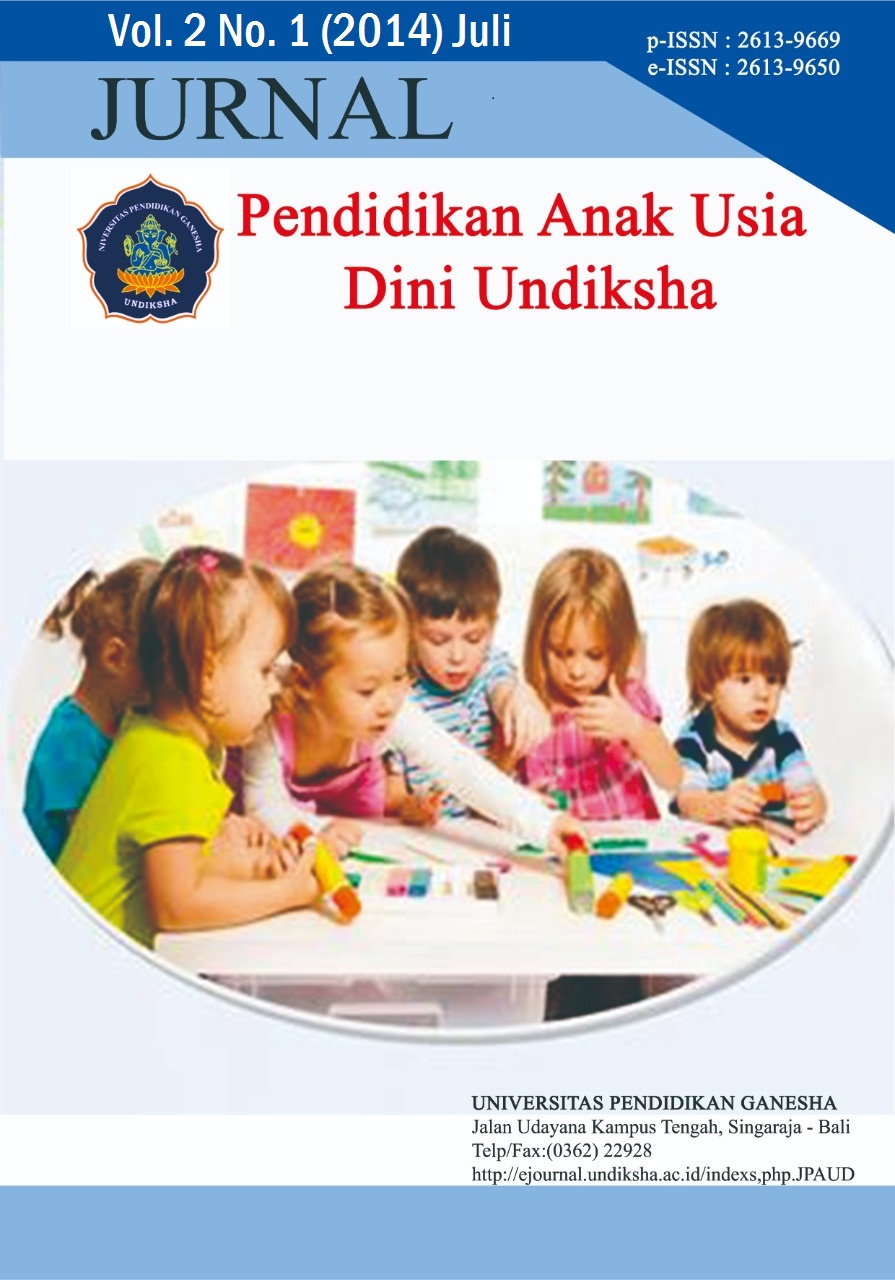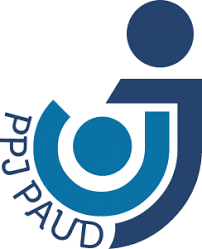PENERAPAN MODEL PEMBELAJARAN MAKE A MATCH BERBANTUAN MEDIA PUZZLE UNTUK MENINGKATKAN KEMAMPUAN KOGNITIF
DOI:
https://doi.org/10.23887/paud.v2i1.3267Abstrak
Penelitian ini bertujuan untuk mengetahui peningkatan kemampuan kognitif anak dalam menghubungkan konsep bilangan dengan lambang bilangan setelah penerapan model pembelajaran make a match berbantuan media puzzle untuk meningkatkan kemampuan kognitif pada anak kelompok B semester II tahun pelajaran 2013/2014 di TK Kecubung Patas .Jenis penelitian ini adalah penelitian tindakan kelas yang dilaksanakan dalam dua siklus. Setiap siklus terdiri dari tahap perencanaan tindakan, pelaksanaan tindakan, observasi/evaluasi dan refleksi. Subjek penelitian ini adalah 11 anak kelompok B TK Kecubung Patas Tahun Pelajaran 2013/2014. Data tentang hasil belajar dalam penelitian ini dikumpulkan dengan menggunakan metode observasi. Data yang telah dikumpulkan dianalisis menggunakan metode analisis statistik deskriptif dan metode analisis deskriptif kuantitatif. Hasil penelitian menunjukkan bahwa penerapan media puzzle dalam pembelajaran dapat meningkatkan hasil belajar kemampuan kognitif anak kelompok B TK Kecubung Patas tahun pelajaran 2013/2014. Hal ini dapat dilihat dari adanya peningkatan rerata hasil belajar kemampuan kognitif anak pada siklus I adalah 63,60% yang berada pada kategori rendah. Rerata hasil belajar pada siklus II sebesar 82,40% dengan kriteria tinggi. Jadi terjadi peningkatan belajar sebesar 18,80%Kata Kunci : model pembelajaran make a match, media puzzle, kemampuan kognitif
This resarch aimed to know the improvement of children’s cognitive in connecting the number concept and number symbol after the application “make a match” learning model aided by puzzle media to improve children’s cognitive in group B, in the second semester, academic year 2013/2014 of TK Kecubung Patas. The type of this research was the action-based classroom research that carried out in two steps. Each step consisted of planning, realizing, observing/evaluating and reflecting. The subject of this research was 11 children in group B, TK Kecubung Patas in academic year 2013/2014. The data about the result study in this research gathered by using obsevation method. The gathered data analyzed by using statistic descriptive and descriptive quantitative method. The result of this research showed that the application of puzzle media in learning process can increase the result study of children’s cognitive in group B, TK Kecubung Patas in academic year 2013/2014. It can be seen from the increase of result study of children’s cognitive. In step I, the result was 63,60%. It meant that it was low category. The mean of result study in step II was 82,40%. It was high category. Thus, from those results, there was the improvement 18,80%
keyword : Make a match learning model, puzzle media, cognitif skill
Diterbitkan
2014-07-09
Cara Mengutip
., N. L. R., ., P. D. A. A. G. A., & ., P. R. U. S. (2014). PENERAPAN MODEL PEMBELAJARAN MAKE A MATCH BERBANTUAN MEDIA PUZZLE UNTUK MENINGKATKAN KEMAMPUAN KOGNITIF . Jurnal Pendidikan Anak Usia Dini Undiksha, 2(1). https://doi.org/10.23887/paud.v2i1.3267
Terbitan
Bagian
Articles
Lisensi
Authors who publish with the Jurnal Pendidikan Anak Usia Dini Undiksha agree to the following terms:
- Authors retain copyright and grant the journal the right of first publication with the work simultaneously licensed under a Creative Commons Attribution License (CC BY-SA 4.0) that allows others to share the work with an acknowledgment of the work's authorship and initial publication in this journal.
- Authors are able to enter into separate, additional contractual arrangements for the non-exclusive distribution of the journal's published version of the work (e.g., post it to an institutional repository or publish it in a book), with an acknowledgment of its initial publication in this journal.
- Authors are permitted and encouraged to post their work online (e.g., in institutional repositories or on their website) prior to and during the submission process, as it can lead to productive exchanges, as well as earlier and greater citation of published work. (See The Effect of Open Access)











